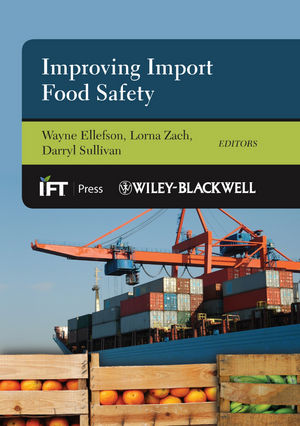Inspections, Part 2: Expectations

In the December/January 2004 issue of Food Safety Magazine, I wrote about the professional sanitarian and our deportment during an inspection. I provided some of the rationale of an inspection and some of the professional and ethical considerations that govern our job. In Part 2, I would like to touch upon what the sanitarian expects, or rather, would like to expect when conducting his or her inspection of a food processing or retail food establishment. Let me begin by saying that ultimately the job of the professional sanitarian in the regulatory community is to protect the public against foodborne illnesses and intoxications. We do this by monitoring compliance with codes, rules and regulations through the process of inspections, inasmuch as time and practice allows.
Ideally, we would all like to spend a day or more at each establishment, carefully reviewing food handling practices, evaluating quality control systems and ensuring that the facilities are indeed sanitary and physically adequate to support the operation. Under ideal conditions, we would take the time and follow several foods from receiving to finished preparation, carefully logging and critiquing time, temperature and handling practices. In other words, we would like to detail and validate every establishment’s interpretation of current Good Manufacturing Practices (cGMPs) and their version of Hazard Analysis Critical Control Points (HACCP) plans. We would like to verify training of employees, and if we have the resources such as ATP detectors and microbiological sampling kits, we also would check the efficacy of cleaning and sanitizing practices. Finally, we would enjoy the luxury of sitting down with the operator and reviewing our findings in detail—with references, suggestions, recommendations, and most importantly, discussing remediation strategies and schedules to meet the operator’s needs and resources. Ultimately, we hope that our inspection helps to protect the public.
This rarely happens in real life, except for those sanitarians that have the good fortune to be in institutional practice. As regulators, we wish nothing more than the luxury of time. After more than two decades of health department budget cuts, the chronic shortage of qualified and well-trained, well-paid environmental health professionals, and the mind-boggling advancements in food production and retail food preparation, we hardly have the time to keep up with our assignments, let alone to take on new ones. This has resulted in a disproportionate increase in the sanitarian’s workload. Something has to give, and time is something that we do not have.
Impressions Count
With the implementation of recent regulatory initiatives—in some cases, “feel-good” laws—many local sanitarians find themselves having to inspect the same establishment up to four times a year, with no consideration of past practices or operator dedication to food protection. With each inspection, they have to reexamine everything on the inspection form, including the same “walls, floor and ceilings” that were looked at previously. This leaves precious little opportunity to demonstrate their professional prowess by evaluating the more important practices and processes that directly affect food safety.
Like it or not, we have a job to do, and we do it with pride and to the best of our ability. Therefore, to compensate for the lack of time to conduct a thorough inspection, cum audit or evaluation, we use surrogate observations and other clues to let us know how well the operation is doing. How? As a general rule of thumb, first impressions are generally lasting impressions. When we inspectors enter a food production facility or restaurant, we rely on our senses for that all-important first impression. If we detect the smell of sewage, garbage, cockroaches and mouse infestation (oh yes, they smell), mold, unwanted fermentation, decay and foods otherwise past their prime, we know there may be a potential problem in food quality and/or safety.
Further, we can see soiling, and we know the difference between this day’s dirt, yesterday’s dirt and last week’s or last month’s dirt. Black grease and soil build-up around equipment legs, floor drains, wainscoting, garbage cans, mop pails and refrigerator door handles didn’t “just happen,” it’s been there awhile. We can see discolored cutting boards, stained stainless steel, flies, old and baked-on spillage on ranges, ovens and kettle exteriors, and grease on hood filters, gray wipe rags and aprons. We can see if the hand washing sinks are used (the presence or absence of water is a dead giveaway). Any one of these things, among other tell-tale clues, cautions an inspector to potential problems in food safety.
When we enter a facility, we can see if that facility is designed to accommodate the products that are prepared and we can determine traffic patterns to predict where potential cross-contamination exists in an operation. Inspectors can spot the few nuances that tell us if the management and staff received proper training in food protection. The training clues include simple things like the presence of a thermometer to take food temperatures; wearing gloves appropriately; wearing head covering and clean outer garments; and using clean wipe rags.
If we stand there long enough (usually, no more than five minutes), we will learn whether hands and/or food-contact utensils are part of a cross-contamination problem, and we also will learn to what extent ongoing cleaning and sanitizing are part of the business’ operation. In short, a clean establishment has a certain look, smell and cadence about it—and so does an insanitary operation. The former tells us that care and pride is taken with the facility, which generally translates to favorably adequate food handling practices; the latter tells us that care and pride are not taken and likely presents a food safety problem. The state of the facility, as well as all of the methods and practices that we see (and smell), will determine the conduct of the inspection.
What Does the Inspector Expect?
Operators of food production facilities and restaurants have the opportunity to turn an inspection into a learning experience for both the establishment and the sanitarian. Most sanitarians have seen the internal workings of more food establishments than anyone in the industry. We get the opportunity to inspect everything from fast food to mom-and-pop outlets, to caterers and five-star restaurants. We have worked with feed lots, slaughter and packing houses, grain processors, dairies, poultry production and egg-breakers, canners, warehouses and transporters, just to name a few. At each of these businesses, we learn something unique about their operation and safe food handling practices. We are a wealth of information and we are all more than willing to freely share any of it, provided that it does not violate any confidentiality.
Operators know more about their food business than anyone. If they take pride in the product they produce and the facility in which they work, there is no shame in showing it and sharing the knowledge. Every sanitarian welcomes information volunteered, rather than having to ferret for it. In any inspection, the opening conference is probably the most important step. It is here that the ground rules and expectations are established. The following is a sanitarian’s wish list that I wrote down several years ago when I first was asked about my expectations as an inspector. I guarantee that these suggestions will go a long way to make the inspection process as pleasant, informative and educational as possible:
• As an operator, let the sanitarian know that you are familiar with cGMPs (21 CFR Chapter 1, Part 110–Current Good Manufacturing Practice in Manufacturing, Packing or Holding Human Food). Believe it or not, it is the basis for everything we do, and most importantly, it is the anchor for HACCP. By referencing your practices to the cGMPs, you will demonstrate your commitment to food safety, establish credibility and garner instant respect.
• Know the principles in the Public Health Service/U.S. Food and Drug Administration (FDA) Food Code. This is the document that guides the inspection for retail food establishments. Every “shall” or “shall not” in the FDA Food Code is referenced by some rationale or justification. Consider it an operating manual for food safety. Knowing the FDA Food Code is as important, if not more so, as knowing the labor and tax laws that govern your business.
• Know your local laws, including those for zoning, as well as business licensure, water, sewage and waste disposal. After all, you are a member of the community and it is part of your responsibility. It is also the sanitarian’s responsibility to enforce these laws.
• As a food processor, share your quality assurance/quality control/quality improvement (QA/QC/QI) documents and relate them to the immediate operations. Have your time/temperature logs and any other food safety related diaries ready for review.
• If you are a restaurateur, have your menu in hand. Briefly review it with the sanitarian and volunteer information on how your establishment maintains the safety of shellfish, poultry, meats, melons and any other potentially hazardous foods listed thereon. If you have established a HACCP program, even a cursory one, share that, as well.
• Let the sanitarian know the name of your food purveyors and transporters. This really helps everyone in the event of a recall.
• Be proud to display your certificates and credentials from the food safety courses you have taken, as well as those of your staff.
• Inform the sanitarian on how you date and rotate your stock, and how you thaw, chill, reheat and maintain safe food temperatures. After all, this is the one tangible thing that the sanitarian can verify during the inspection.
While this list isn’t all-encompassing, it nonetheless serves as a good starting point. The rest is in the detail. In the next installment: Compliance.
Forensic sanitarian Robert W. Powitz, Ph.D., MPH, RS, CFSP, is principal consultant and technical director of Old Saybrook, CT-based R.W. Powitz & Associates, a professional corporation of forensic sanitarians who specialize in environmental and public health litigation support services to law firms, insurance companies, governmental agencies and industry. Dr. Powitz welcomes reader questions and queries for discussion in upcoming columns. Contact him directly at sanitarian@juno.com.
Looking for a reprint of this article?
From high-res PDFs to custom plaques, order your copy today!








